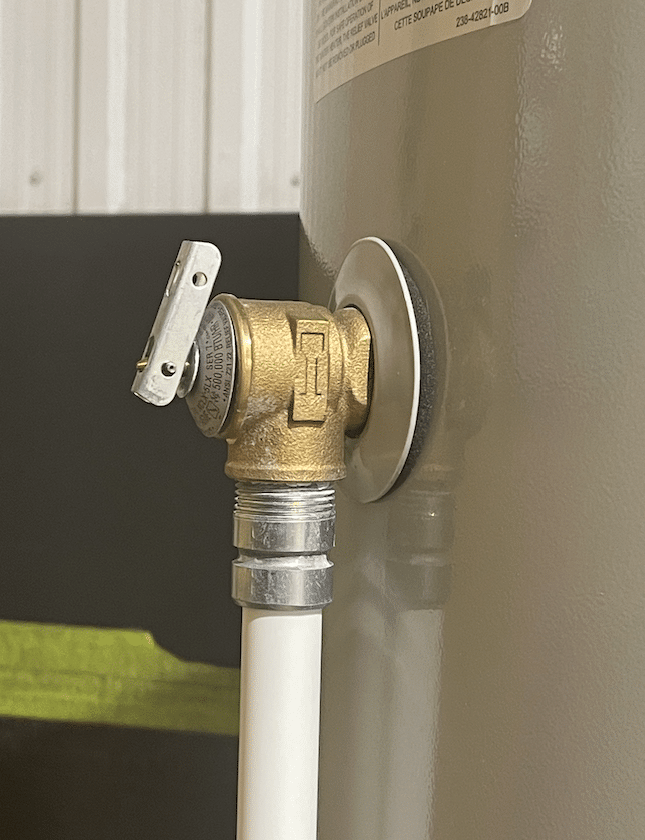A stuck open water heater pressure relief valve may indicate excessive pressure or a faulty valve. Immediate attention is required to prevent damage.
A water heater pressure relief valve is a critical safety feature that helps prevent excessive pressure buildup. If this valve gets stuck open, it can result in continuous water leakage, potential water damage, and even system failure. Regular maintenance and inspection are crucial to ensure the valve functions correctly.
Ignoring this issue can lead to higher repair costs and safety hazards. It’s essential to address this problem promptly by either replacing the valve or seeking professional help. Understanding the importance of this component can help maintain the efficiency and safety of your water heating system.
Page Contents
Common Causes
Sediment buildup happens over time. Tiny particles settle at the bottom of the tank. These particles can block the valve. A blocked valve might get stuck open. This can cause leaks. Regular cleaning helps prevent this problem.
High temperature can cause the valve to open. Water heaters should not be too hot. If the thermostat is broken, it may heat water too much. This can make the valve stay open. It is important to check the temperature setting.
Signs Of A Stuck Valve
Water dripping continuously from the discharge pipe or a hissing sound indicates a stuck open water heater pressure relief valve. Immediate inspection and repair are necessary to prevent potential damage.
Water Leakage
Water dripping from the valve is a clear sign. Puddles forming near the heater also indicate a problem. This could mean the valve is stuck open. Check for any moisture around the heater. Ensure there are no other leaks. Regular checks can prevent bigger issues.
Unusual Noises
Strange sounds can signal a stuck valve. Hissing or whistling noises are common. These noises come from escaping steam. They can also indicate pressure problems. Listen closely to your water heater. Quick action can prevent damage.
Safety Precautions
First, locate the circuit breaker for the water heater. Flip the switch to off. This step stops electricity flow. Be sure the power is completely off before moving forward. If unsure, use a voltage tester. This ensures no electrical current is present. Safety comes first, so double-check.
Find the pressure relief valve on the heater. Place a bucket under the valve to catch water. Slowly lift the valve lever to release pressure. Let water flow until it stops. This step prevents burns from hot water. Ensure the area is clear of any obstacles. Once pressure is released, proceed with repairs.

Credit: www.corroprotec.com
Tools Needed
First, turn off the water heater. Next, attach a hose to the drain valve. Place the other end of the hose in a bucket. Open the drain valve to let out water. Be careful, the water may be hot. Drain the tank until it is empty. This will prevent water spills. Once drained, close the drain valve.
Use a wrench to loosen the pressure relief valve. Turn it counterclockwise to remove. Be gentle to avoid damage. Check the valve for any debris. Clean the valve if needed. If the valve is broken, replace it with a new one. Install the new valve by turning it clockwise. Tighten it with the wrench.
Step-by-step Fix
A pressure relief valve should match your water heater’s specifications. Look for quality materials to ensure durability. Temperature ratings must align with the heater’s maximum temperature. Ensure the pressure rating fits your system. Research brands known for reliability and good reviews. Always consult your heater’s manual for exact requirements.
Turn off the water and power supply to the heater. Drain a bit of water to reduce pressure. Use a wrench to remove the old valve. Apply tape to the new valve’s threads for a secure fit. Screw in the new valve tightly but not too tight. Ensure the discharge pipe points downward and is secure. Turn on the water and power supply. Check for leaks and proper operation.

Credit: www.youtube.com
Installing A New Valve
Fixing a stuck-open water heater pressure relief valve ensures safety and efficiency. Install a new valve to prevent potential water damage and maintain proper system function.
Regular Inspections
Inspect the water heater every three months. Look for leaks and corrosion. Check the pressure relief valve for any signs of wear. Make sure the valve opens and closes freely. Replace the valve if you find any issues.
Flushing The Tank
Flush the water heater tank every six months. Turn off the power and water supply first. Attach a hose to the drain valve. Let the water flow out until it runs clear. This removes sediment from the tank. Clean tanks last longer and work better.

Credit: diy.stackexchange.com
Conclusion
Dealing with a stuck open pressure relief valve can be stressful. Regular maintenance can prevent such issues. Always consult a professional for repairs. A functioning valve ensures safety and efficiency. Addressing problems early can save time and money. Keep your water heater in top condition for peace of mind.
